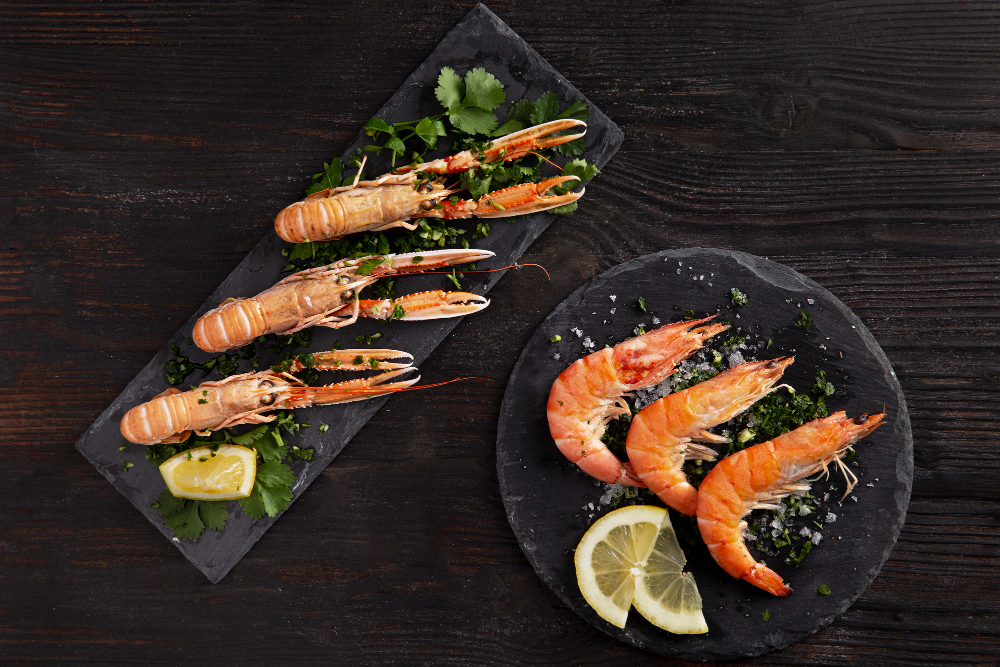Difference between Shrimp and Prawn
In the vast world of seafood, the terms “shrimp” and “prawn” are often used interchangeably, leaving many wondering if there’s any real difference between the two. Well, wonder no more! In this article, we’ll unravel the mysteries and explore the subtle yet significant distinctions between shrimp and prawns. From their appearances to culinary uses, we’ll break it down in simple terms.
Size
Shrimp : Generally, shrimp are smaller in size, ranging from a few centimeters to a few inches in length.
Prawn : Prawns tend to be larger, often growing to several inches or even up to a foot in length. They are usually more massive than shrimp.
Legs
Shrimp : Shrimp have shorter legs, and their second pair of legs is not as robust as that of prawns.
Prawn : Prawns, on the other hand, have longer legs, with the second pair being more substantial and muscular compared to shrimp.
Habitat
Shrimp : Shrimp are versatile and can be found in both freshwater and saltwater environments. They adapt well to various aquatic habitats.
Prawn : Prawns are typically found in freshwater habitats like rivers and lakes, although some species can also tolerate brackish water.
Geographical Distribution
Shrimp : Shrimp are often associated with warmer climates and are prevalent in tropical regions.
Prawn : Prawns can be found in a broader range of climates, from tropical to colder waters. They exhibit a more extensive geographical distribution.
Appearance
Shrimp : Shrimp often have a translucent appearance, and their bodies are typically slender and curved.
Prawn : Prawns tend to be more opaque, and their bodies are usually longer and straighter compared to shrimp.
Flavor and Texture
Shrimp : Shrimp are known for their delicate, sweet flavor and a softer texture. They are commonly used in dishes where a subtle seafood taste is desired.
Prawn : Prawns have a meatier texture and a bolder flavor. They are often preferred for heartier dishes like curries, stir-fries, and grilling.
Culinary Use
Shrimp : Shrimp are popular in a variety of dishes, including shrimp scampi, shrimp cocktails, and seafood pasta. They are versatile and adapt well to different cooking methods.
Prawn : Prawns are commonly used in more substantial dishes, such as prawn curries, grilled prawns, and prawn stir-fries. Their larger size makes them suitable for more robust culinary applications.
Commercial Importance
Shrimp : Shrimp are often more commercially dominant and contribute significantly to the global seafood industry. They are extensively farmed and harvested for both domestic and international markets.
Prawn : While prawns are also commercially important, they may not reach the same level of dominance as shrimp in the seafood industry.
In the shrimp vs. prawn face-off, it’s clear that these aquatic wonders have their own unique traits. From size and legs to habitats and flavors, each brings something special to the seafood smorgasbord. So, the next time you’re faced with a menu offering both shrimp and prawns, you’ll be armed with the knowledge to make an informed choice.











